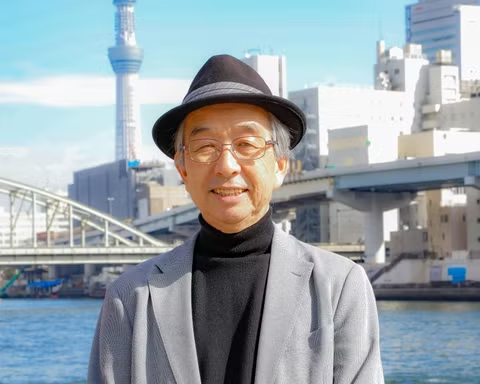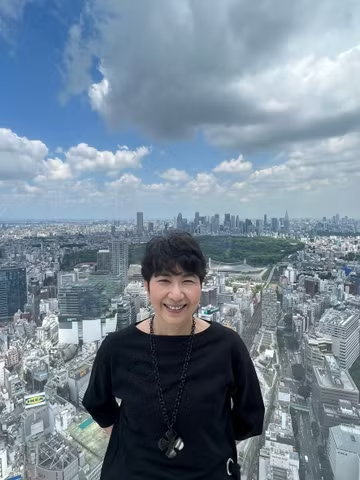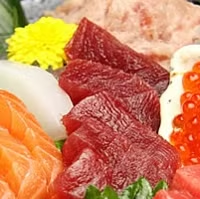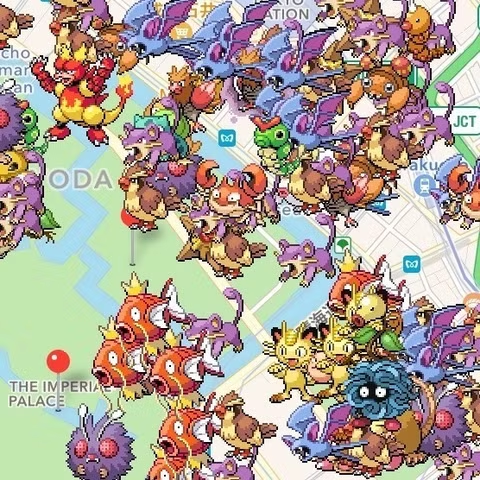When you think of a country where modern and ancient cultures are blended in harmony, I'm sure the first place you'd think of is Japan.
Japanese culture and customs have been constantly evolving. Neither side is more favored than the other and the new and old are both celebrated in Japan culture. You can walk down a street in Japan and see people wearing kimonos and geta (Japanese wooden sandals) while browsing on their iPhones or drinking from Starbucks.
Although the current Japanese culture intertwines deeply with past traditions, one can see that there are differences between the two. However, instead of conflicting with each other, they instead complement each other in unique ways. So if you're wondering what the differences between old and modern Japanese culture is, then we have prepared some interesting Japanese culture facts below to make your trip to Japan more interesting!
Ideology
Old Japanese Culture: Conservative, Nationalistic, traditionally driven. Heavily influenced by Chinese culture, Japan values "purity" and tradition over anything but is still flexible to change as seen during the Edo and Meiji periods. Even after World War II, the Japanese were able to capitalize on its rapid development and its citizens were also quick to adapt.
Modern Japanese Culture: International, adaptive, technology-oriented. Modern Japanese Culture is mainly defined by Western ideologies. With the advancement of technology, Japan has been capitalizing on being one of the leading nations. They prioritize change and are always looking for something different. This does not mean that they will leave the old behind, instead, those core ideas are incorporated into modern Japan values.
Hospitality
Old Japanese Culture: One of the traits of Japanese culture of the past is the emphasis on hospitality and politeness. Traditional inns of Japan are called Ryokans, they usually have tatami mat flooring, public baths and socializing with the owner and neighbors are greatly encouraged. In recent times they have been growing in popularity as visitors from overseas increasingly want to experience Japanese culture. Such Ryokans can be found in hotspring towns such as Hakone. Be sure to contact a local Hakone guide for more details.
![]()
On the other hand, Japanese traditional tea houses have become quite rare to come across, especially those that still practice tea ceremonies. In comparison with modern cafes, it can take some time until you'd be able to get your drink and for the average busy worker, it might not be worth the wait.
Modern Japanese Culture: Convenience is much more important but uniqueness is also significant. You might have noticed it already, but most hotels in Japan, especially in big cities like Tokyo, have rather modest rooms, usually just enough for the person to sleep. You may have also come across Capsule hostels where guests sleep in "capsules"-like pods, toilets, and bathrooms are shared and this helps keep the costs down.
In addition, the "pop culture" cafes and restaurants such as robot cafes, maid cafes and even animal cafes are gaining traction. Japanese youths enjoy trends and trying new things and the appearance of these coffee stores are just that. If you want a truly unique look into modern Japanese pop culture, be sure to check out Robot Restaurant.
Fashion
Old Japanese Culture: It was considered that the more clothing you wear, the richer you are. The less skin is showing, the better, this separated between the average manual laborer and lords greatly. Bodily tattoos are frowned upon and even today, many public places still do not allow those with tattoos to enter.
Modern Japanese Culture: Cosplays have vastly grown in Japan with the booming popularity of anime and manga. People are willing to spend a significant amount of money on custom-made costumes and accessories to fit the character they want to become. If you happen to go to Harajuku, you might have seen the unusual fashion there, from lolitas to gothic, it's a whole different world out there.
Interestingly, even the traditional Kimonos have been seeing changes as well. Prominent designers such as Jotaro Saito have been testing different, modern designs using denim and jersey fabrics that have never been done before.
Cuisine
Old Japanese Culture: Japanese traditions emphasize the importance of freshest, highest quality of ingredients. Rice is considered a core part of every meal and would always be served with side dishes. Simplicity was an important aspect and dishes would usually only be seasoned with salt and pepper. And yet dishes such as Sushi is considered to be a craft that you'd dedicated your whole life into to master. For even rare ingredients such as Fugu, one would need at least 10 years to be qualified to prepare it.
![]()
Modern Japanese Culture: Western fast food is strongly favored due to its convenience. If you've ever visited a small ramen shop or any widely popular shop, then you'd notice that people would finish their meal exceptionally quick and leave straight away for the next customer to come in. Japan also has "fast-food-like" restaurants such as Matsuya, Yoshinoya, and Sukiya that sell Gyudon (beef bowls) at a relatively affordable price and at a quick speed to compete with Western fast food chains.
Not only that, many foods that were once though luxurious has become more accessible thanks to technology such as the appearance of conveyor belt sushi which has made the dish into something readily available for most people to enjoy. Thanks to globalization, you can now also have vegan and halal options when dining as opposed to a century ago. Even dishes where meat is a core ingredient (i.e Ramen, gyoza ), have become something very accessible for those with specific dining requirements. If you're interested in learning more about Japanese cuisine, be sure to check out these Tokyo Food Tours.
Entertainment
Old Japanese culture: Traditional theatre arts such as Noh and Kabuki were the main sources of entertainment in Japan. They combine music, drama, and dance to create a unique theatrical experience for the audience. There's also the Geishas which although it is quite rare to see today, remains as an important cultural Japanese aspect. Much like the Japanese's obsession for perfection, the Geishas are entertainers that require years of learning and training in Japanese arts to become a full-fledged Geiko. If you want to see a traditional Geisha experience, be sure to check out these Geisha tours in Kyoto.
Modern Japanese culture: Entertainment in the fields of gaming and anime is the main driving force that pushes Japan's economy until today. Japan is revered across the world as the land of flying and spiky hair anime characters, the medium alone have brought Japan such an overwhelming amount of fame that now other nations such as Korea and China also want a piece of the action. Not only that, the gaming industry of Japan is arguably comparable to the US's and continues to hold a large portion of Japan's National GDP. I'm sure most of us remember turning on a Gameboy and playing our favorite games all day and night.
Architecture
Old Japanese Culture: Japanese architecture shares many similarities with Chinese styles. You can notice the common structure by looking at old castles and temples that were dedicated to Shoguns and lords. If you're looking to learn more about castles, be sure to check out these Osaka Castle Tours in the city of Osaka.
Modern Japanese Culture: Modern Japan takes influence from the European style of architecture and combines it with its own style to create a unique and fresh take on building designs. If you visit metropolises like Tokyo or Osaka, then you'd may have noticed particular places that look just like something from built in England or any other European country.
In addition, you may have noticed if you're looking for a house to stay in or some sort, almost every house includes a "Youshitsu" or Western-style room with wooden flooring instead of the traditional "Washitsu"-rooms equipped with tatami mats.
Literature
Old Japanese Culture: Japan's writing system was introduced from China, it wasn't until the Heian Period (794 - 1185) that the Hiragana alphabet became widely used. Japanese first poems came from the famous Man'yoshu (Collection of a thousand leaves) which contained 4,500 poems written by commoners and emperors of the time. This was the start of verse forms in Japan and later the creation of Haikus which appeared during the Edo Period. Popular themes within this time were religious and spiritual beliefs, myths to legends and Japan's own history as well.
Modern Japanese Culture: Since the Meiji period, the use of Kanji has gradually lessened, even to the point of limiting the amount that one can use in newspapers and the like. Modern writers now write in a wide array of genres and are not limited to Buddhist themes alone. They also promote women's roles in society, encouraging equality and disproving acts of sexism as well as other social issues.
Not only that, Japanese manga has become an important part of popular culture that has spread across the world. To some, it is a gateway that introduces young readers to reading and to others, it is the improved version of novels and fantasy writing in books. Unlike the comics of the West, a manga's story can be as graphic and philosophical as the author wants.
Sports
Old Japanese Culture: Sports competitions had religious purposes mainly for the Shinto sect. Japan's national sport, Sumo, was said that if a fisherman competed and won, then he'd have a good catch for the entire year to come. While some sport such as Archery involved sacred ceremonies and was only for Samurais and Lords to practice.
Modern Japanese Culture: After the Meiji Restoration period, Western sports were introduced to Japan. There were many sports clubs and after-school activities became popular. Sports like football, baseball, and professional wrestling were airing on TV which helped increase their popularity. If you're an avid watcher of anime or reader of mangas then you may have noticed that there are also many sports-themed animes and mangas that help increase attractions of less popular sports such as Volleyball, Pingpong, and Sumo. While the majority of sports that are popular today are from the West, Sumo and traditional martial arts such as Judo remains an important part of Japanese sports culture. Be sure to check out these Tokyo Sumo Tours to learn more.
Art and Crafts
Old Japanese Culture: To be considered a Japanese craft, it must go through a set of strict requirements. Those requirements are usability, whether or not it is handmade, its origin and if traditional Japanese techniques and materials were used. There are 8 categories ranging from Ikebana (flower arranging) to ceramics and dollmaking. Origami, the art of paper folding without cutting, gluing or marking is one of the most widespread Japanese craft that has expanded greatly beyond Japan.
![]()
Modern Japanese Culture: Overtime, practices of these crafts became less restrictive and many artists wanted to be more adventurous. In Ikebana, for some artists, not just rare flowers are used but also the overlooked dirt and rocks are also featured.
![]()
Not only that, techniques from Origami are now being developed with modern technology to create efficient, functional tools that can be used in harsh environments such as space, the sea, and in various medical fields.
Japanese Culture: The Old and the New
Since opening its borders, Japan has changed for the better across the years. Many professionals from chefs, artists, craftsmen to the average citizen have proven that Japan is capable of change instead of being chained down by past traditions. And yet, it still manages to celebrate the beauty of its culture, you can still see many traditional practices in many places and have an authentic Japanese experience when you're just strolling across the street or staying at an inn. Without a doubt, Japan truly is the perfect fusion between a country's old and modern culture.
Want to experience Japanese culture to its fullest?
Perhaps you don't know the language and want to know more about Japan than just simply just sightseeing. A local guide can give you a unique experience while traveling and unlike other tour services, where you go is only limited by you. At GoWithGuide we offer the best customizable tours and Local Guides to help you on your journey across Japan.
![]()
The best part is?
You have the freedom to personally create your own tour and decide where you want to go. Simply send a message to our local guides to find a suitable itinerary and quotation for a memorable experience.
Or maybe you want someone to create a tour for you? Then why not Request a Tour. Simply type what you would like to see and our guides will send you quotes and recommendations depending on what you're interested in as well as budget.
Here at GoWithGuide, we offer the best professional Local Guides across Japan that will help you plan your trip. You can also check our Private tours to Tokyo.
Other blogs that might interest you
Tokyo Tower: Price, Hours, Complete Guide in
Tuna auction in Tokyo: Toyosu Fish Market Guide
Shinjuku Shopping: Best Places to Shop in
Top Japanese Culture: 5 Traditions You Must Try in Japan
13 Best Japan Tours & Tips by Local Guides









